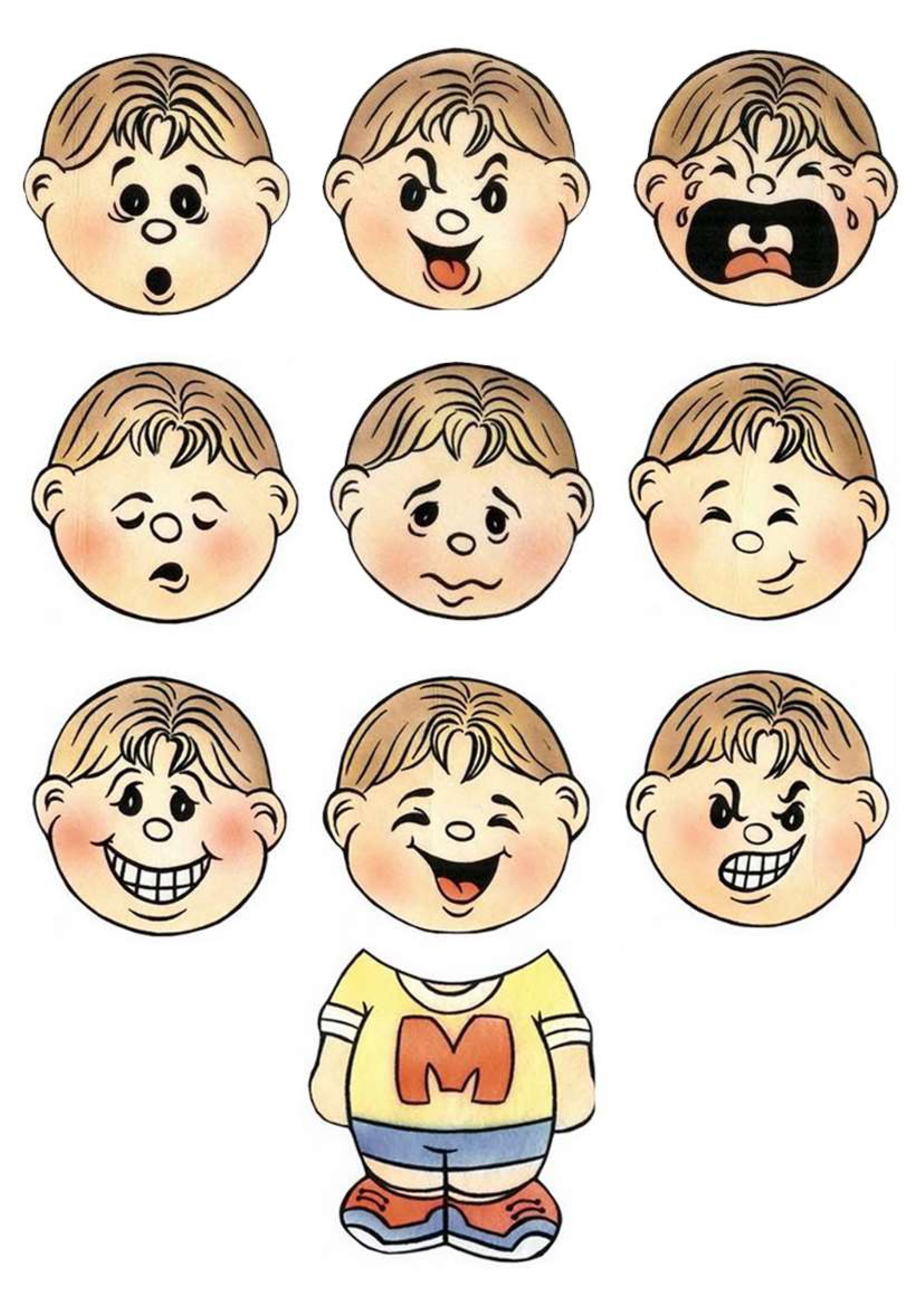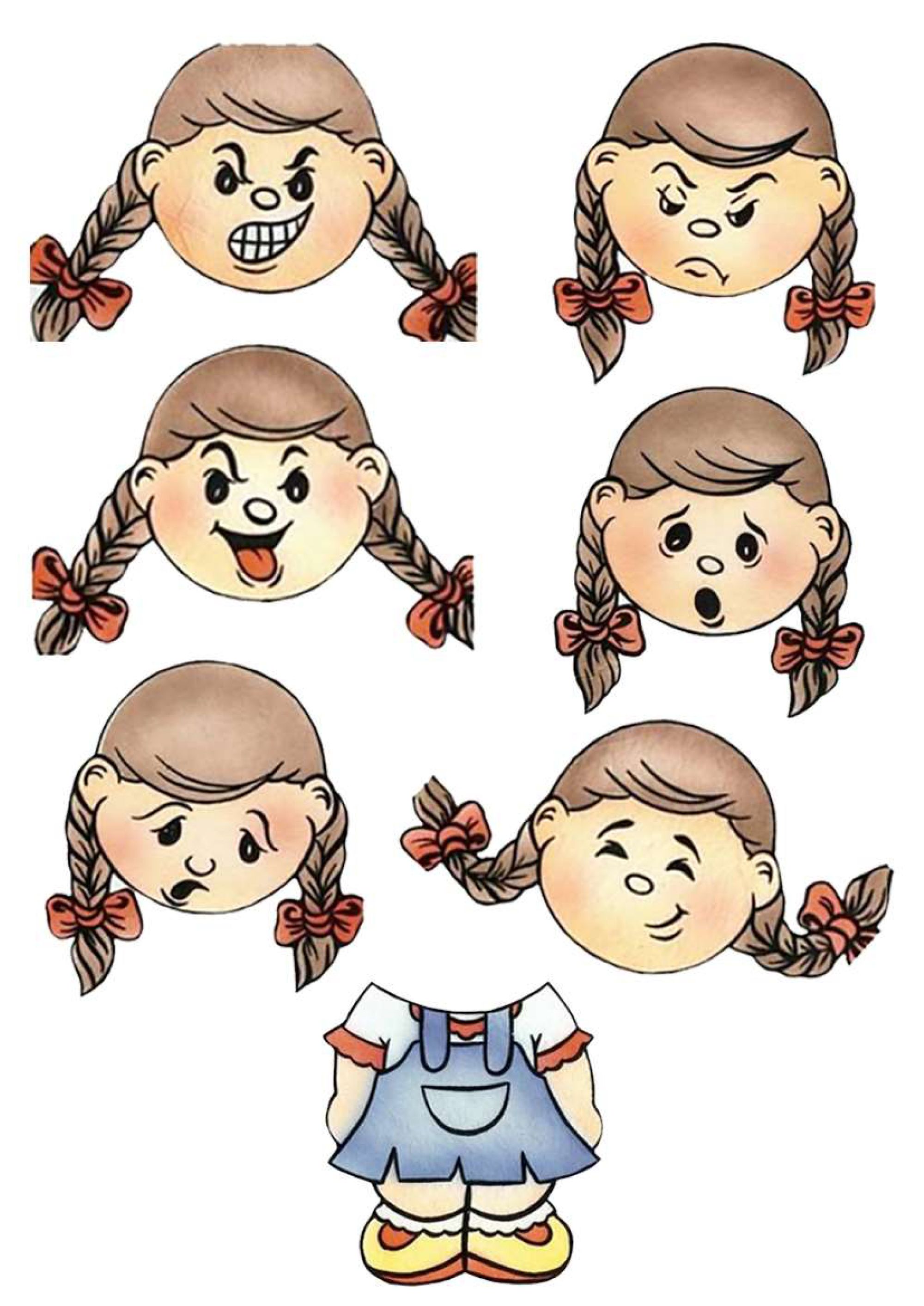In recent years, psychologists can often be heard telling: do not rush to teach a child letters and counting — develop emotional intelligence better. Indeed, the ability to recognize one's own and other people's emotions is a very important skill, and in the era of the dominance of gadgets, it becomes more and more difficult to master them. Moreover, parents themselves often cannot determine their emotions - they were not taught this, and for a long time it was considered indecent to express negative emotions. The psychologist’s training book will come to the rescue. Anna Bykova "How to make children friends with emotions": reading it with the child, performing fun tasks, the parents themselves will become "more savvy", and the children will help them deal with their emotions. Here is one of the chapters of the book:
Why do we need emotions?
- What would happen if there were no emotions? - asked Andrei.
“And really,” said Mom. "Let's think together. Imagine that a person does not have the emotion of fear. Not at all."
“He will be the bravest man,” exclaimed Andrew enthusiastically.
“No-a, he would be the most stupid person,” Nastya said skeptically, “he would go to places he is not supposed to go, cross the road during a red light, tease an angry dog, drive a car at breakneck speed. In general, he would not understand what is dangerous and what is not..
- You're right, the fear protects us from danger. Why do you need anger? Do you remember if anger ever helped you?
Nastya started first:
- At school, the girls decided to laugh at me and hid my pencil box at recess. I got angry and said in an angry voice: "Come on, give it up!" They realized that I was not joking, and returned the pencil case.
- Grisha took away my car in the playground, I got angry and took it back.
- You see, anger is needed to show others that what is happening you do not like. Anger helps us defend our property, our territory and our favorite things. But anger, as a very powerful weapon, must be kept aside for extreme cases in which all other methods are tried and did not bring results.
- Well, and disgust? - Nastya was curious to know: is there really any benefit from such an unpleasant emotion?
“If I suggested that you now eat a rotten apple or a sour soup, what would you say?”
- Phew! - Nastya even twisted her face in disgust.
- Yeah! - happily said mom. - I see on your face the emotion of disgust that warns you against eating all kinds of nastiness. Disgust and its various forms: disgust, hate - protect us from what we do not need, unpleasant or even harmful.
- Why sadness?
“Sadness, like joy, is what helps us feel the importance, the value of someone or something.” When you come to kindergarten and meet children there, are you equally happy?
- No, I am happy about Vitalik, because he is my friend.
- And if Vitalik is sick and does not go to the kindergarten, how do you feel?
- I'm sad then. I love to play with Vitalik.
- Through sadness and through joy, you understand that Vitalik is more precious than all the other guys in the group. If it were not for these emotions, you would not care who to play with. And then there would be no friendship. And there would be no favorite game, favorite activity, favorite fairy tale, favorite dish. It would be all the same ". Sadness and joy are very much connected. There is a rule for them: the more you like something, the more upset you are if you lose it. For example, if I bring you a new lego set, will you be glad?
- And how!
- And then I will say: "Oh, this is not for you" and will carry it back. Are you upset?
- Of course. I did not even have time to play.
“And if I bring a pack of salt to the room, will you be glad?”
Andrei shrugged:
- Why do I need salt? I might just be surprised, but not happy.
- And then I just suddenly take the salt. Are you upset?
- Not. I'm surprised. And I will say: "Strange mother: brings salt here and there".
- And based on your emotions, I can understand that the lego set is important to you, but salt is not. But for a grandmother, when she cooks a soup, on the contrary, salt has value, and the lego set does not.
“That is, according to a person’s emotions, we can understand what is valuable for him and what is not,” Nastya summed up the conversation..
- Yes, that's right, - mother agreed to nod.
- And why wonder?
- When you ask me a question, you are driven by the emotion of interest. Without interest, a person would not want to learn something new, he would not have grown wiser, make progress.
By the way, in the example about salt you mentioned the emotion of surprise. A person is surprised when something goes wrong, as usual, not as he is used to, when an unexpected situation occurs. And for the situation to be unexpected, there should be some expectations.
For example, you look into the pan to find out what we have for dinner, you are driven by the emotion of interest. But if you see blue macaroni there, then you will be surprised because you already know that macaroni is usually of a different color. You had certain expectations of what you would see in the pot. And you didn't expect any blue macaroni. Therefore, the emotion of surprise.
“I understood,” Nastya perked up, “if I see a flying pigeon on the street, I would not be surprised, because I already know that pigeons can fly and expect it.” And if I see a flying cow, I would be surprised, because this is unexpected. And any kid who still does not know that there are animals flying and non-flying when he sees a cow soaring in the sky will not be surprised at all. He will think that's normal.
- Exactly! I also want to say that surprise is a very quick emotion. It is rapidly replaced by another emotion:
- If an unexpected situation happens to be dangerous, that surprise turns into fear.
- If an unexpected situation happens to be safe, that surprise turns into interest.
- If an unexpected situation happens to be enjoyable, that surprise turns into joy.
- And I can show the surprise that turns into joy!
Andrei raised his eyebrows high, opened his mouth, and then began to laugh. Nastya also laughed:
“You had the same face when you opened the box your dad brought and saw a puppy there!”
Andrew got carried away with the game showing emotions:
- And now I show you what is disgusting! You have such a face when you come across a lump in you food!
Nastya also joined the game:
- And I will show your face when you turned on the TV, and at the same time the neighbors began to drill the wall and it seemed to you that this TV was so noisy and would explode! Now I know that it was a surprise from surprise, which turned into fright first, and then joy, when you realized that there was no danger.
For a long time, the guys portrayed different emotions and recalled the events from the life with which these emotions were associated. Let's play games that will help us learn to better recognize emotions..
Learning to recognize emotions
1.Let's remember! Remember the child and what he was surprised at and how it changed. What seemed so unexpected at that time?
2. I wonder if... This game can be played anywhere. On the way to school or in kindergarten, during a trip to transport, while waiting in the clinic. The number of participants can be any. In turn, each leads his own version by completing the phrase "I would be surprised if ...".
for example:
"I would be surprised if our cat speaks with a human voice".
"I wonder if Dad comes from work in a clown costume.".
"I would be surprised if I see aliens in the street".
This game not only explains what a surprise is - it makes you laugh, develops imagination and slowly brings you closer to understanding what “expected” and “unexpected” are.
3. Portray emotions. Give the child a mirror and ask them to show an emotion on their face:
- fear
- anger
- disgust
- sorrow
- joy
- interested
- surprise
Then do it yourself. Once again - together! Liked?
4. Guess the emotion. You can play together or in the company. One shows some emotion, and the rest should guess.
5. We read emotions. Print the pictures and cut them. Stick the body to the sticks, and the faces of the children to the pins. Switch faces to show different emotions. Discuss with your child, what emotions do they express?
The ability to read emotions in the face helps a lot in communication. You shall not be limited to these tasks, but invent your own.
For example, you can take a child to a art museum where portraits or pictures of social life is displayed. And you can ask them to examine faces, to describe on what emotions the artist depicted.
You can view family photos or create your own album of emotions, cutting pictures from magazines.
You can go for a walk with your friends, grab a camera, and arrange an "emotional photo session." Everyone will take turns picturing "I'm angry," "I'm afraid," "I'm happy," "I'm surprised," "I'm sad," "I'm disgusted," "I'm interested," "I'm offended." The more people take part in this, the more opportunities there are to see similarities and differences in the expression of emotions..


Printed material here:

